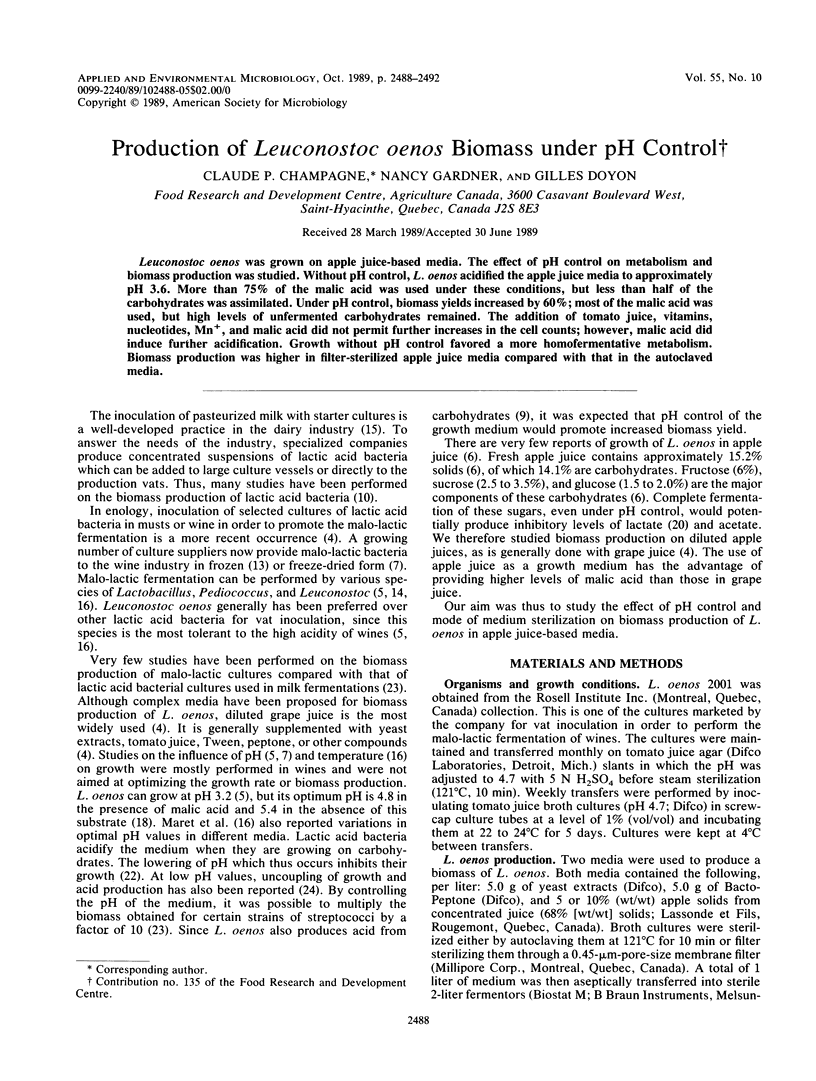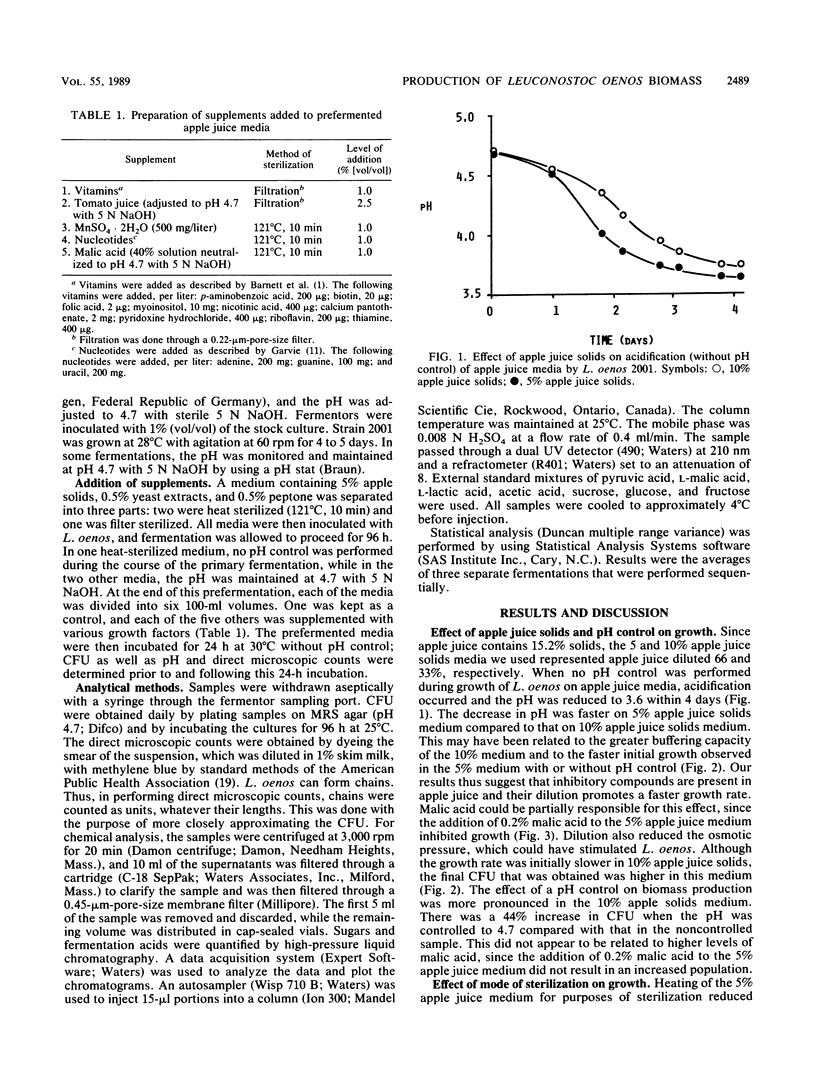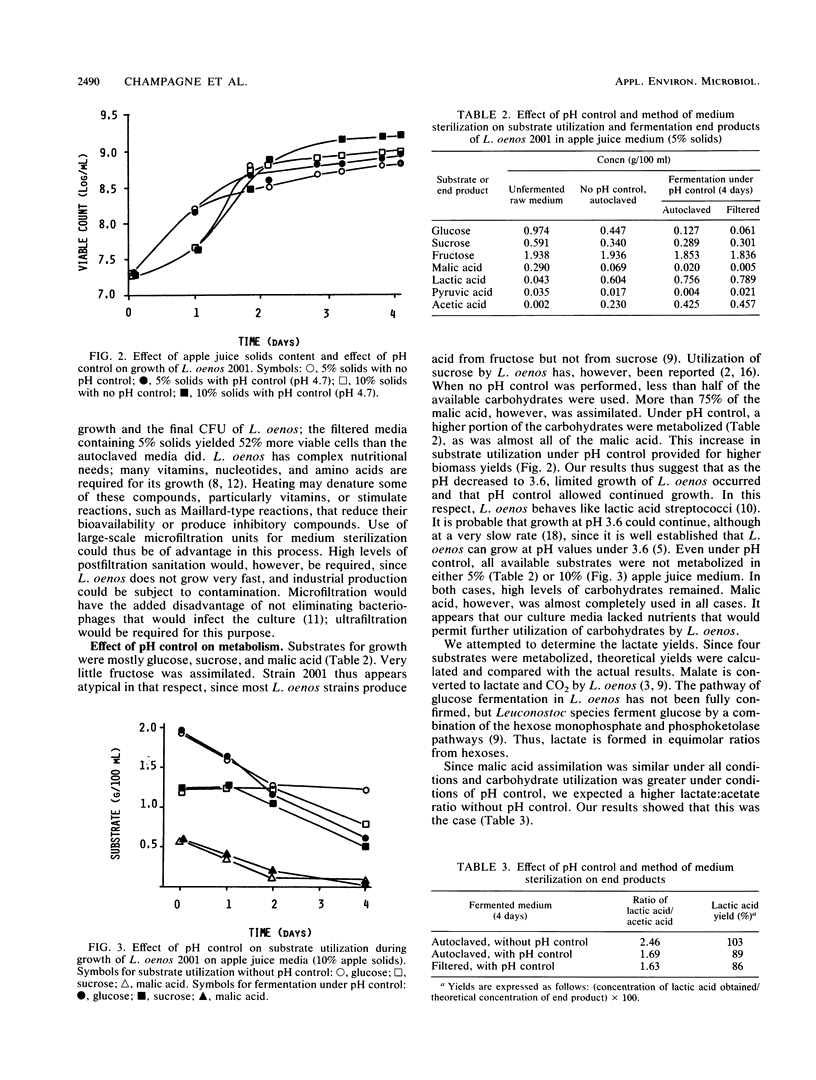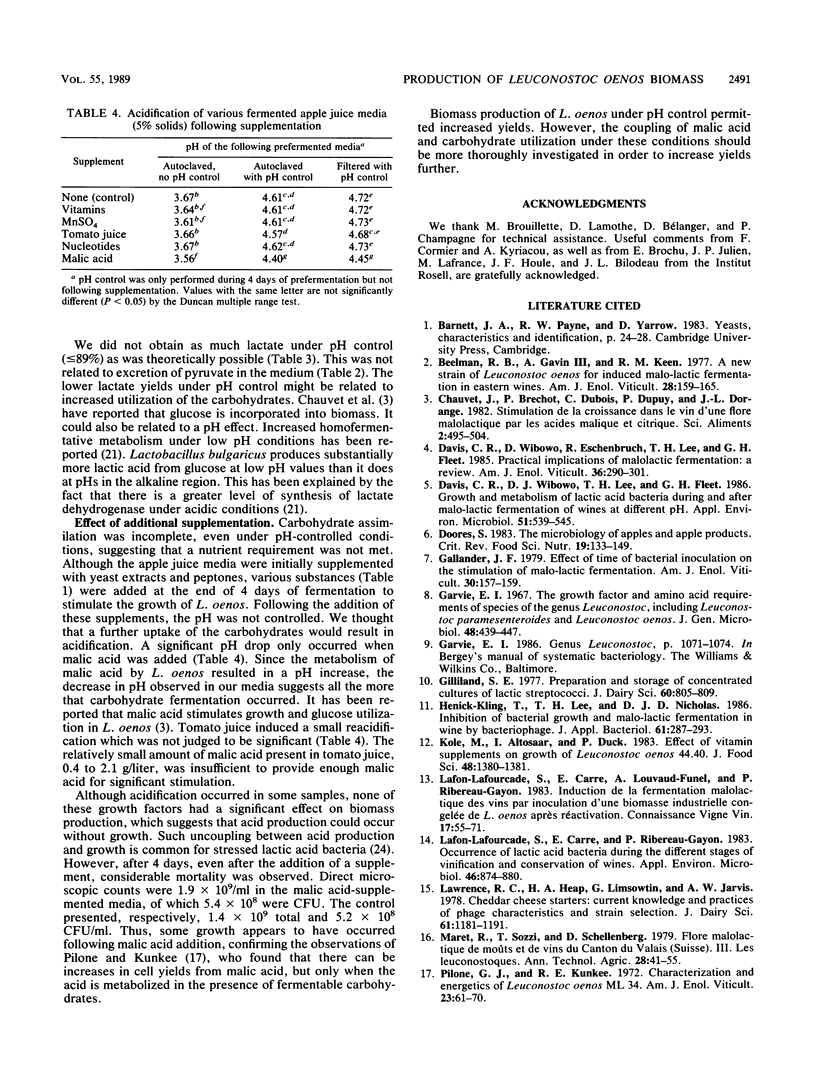Abstract
Leuconostoc oenos was grown on apple juice-based media. The effect of pH control on metabolism and biomass production was studied. Without pH control, L. oenos acidified the apple juice media to approximately pH 3.6. More than 75% of the malic acid was used under these conditions, but less than half of the carbohydrates was assimilated. Under pH control, biomass yields increased by 60%; most of the malic acid was used, but high levels of unfermented carbohydrates remained. The addition of tomato juice, vitamins, nucleotides, Mn+, and malic acid did not permit further increases in the cell counts; however, malic acid did induce further acidification. Growth without pH control favored a more homofermentative metabolism. Biomass production was higher in filter-sterilized apple juice media compared with that in the autoclaved media.
Full text
PDF




Selected References
These references are in PubMed. This may not be the complete list of references from this article.
- Davis C. R., Wibowo D. J., Lee T. H., Fleet G. H. Growth and Metabolism of Lactic Acid Bacteria during and after Malolactic Fermentation of Wines at Different pH. Appl Environ Microbiol. 1986 Mar;51(3):539–545. doi: 10.1128/aem.51.3.539-545.1986. [DOI] [PMC free article] [PubMed] [Google Scholar]
- Doores S. The microbiology of apples and apple products. Crit Rev Food Sci Nutr. 1983;19(2):133–149. doi: 10.1080/10408398309527372. [DOI] [PubMed] [Google Scholar]
- Garvie E. I. The growth factor and amino acid requirements of species of the genus Leuconostoc, including Leuconostoc paramesenteroides (sp.nov.) and Leuconostoc oenos. J Gen Microbiol. 1967 Sep;48(3):439–447. doi: 10.1099/00221287-48-3-439. [DOI] [PubMed] [Google Scholar]
- Lafon-Lafourcade S., Carre E., Ribéreau-Gayon P. Occurrence of lactic Acid bacteria during the different stages of vinification and conservation of wines. Appl Environ Microbiol. 1983 Oct;46(4):874–880. doi: 10.1128/aem.46.4.874-880.1983. [DOI] [PMC free article] [PubMed] [Google Scholar]
- Pilone G. J., Kunkee R. E. Stimulatory Effect of Malo-Lactic Fermentation on the Growth Rate of Leuconostoc oenos. Appl Environ Microbiol. 1976 Sep;32(3):405–408. doi: 10.1128/aem.32.3.405-408.1976. [DOI] [PMC free article] [PubMed] [Google Scholar]
- Reddy C. A., Henderson H. E., Erdman M. D. Bacterial fermentation of cheese whey for production of a ruminant feed supplement rich in curde protein. Appl Environ Microbiol. 1976 Dec;32(6):769–776. doi: 10.1128/aem.32.6.769-776.1976. [DOI] [PMC free article] [PubMed] [Google Scholar]
- Rhee S. K., Pack M. Y. Effect of environmental pH on fermentation balance of Lactobacillus bulgaricus. J Bacteriol. 1980 Oct;144(1):217–221. doi: 10.1128/jb.144.1.217-221.1980. [DOI] [PMC free article] [PubMed] [Google Scholar]


